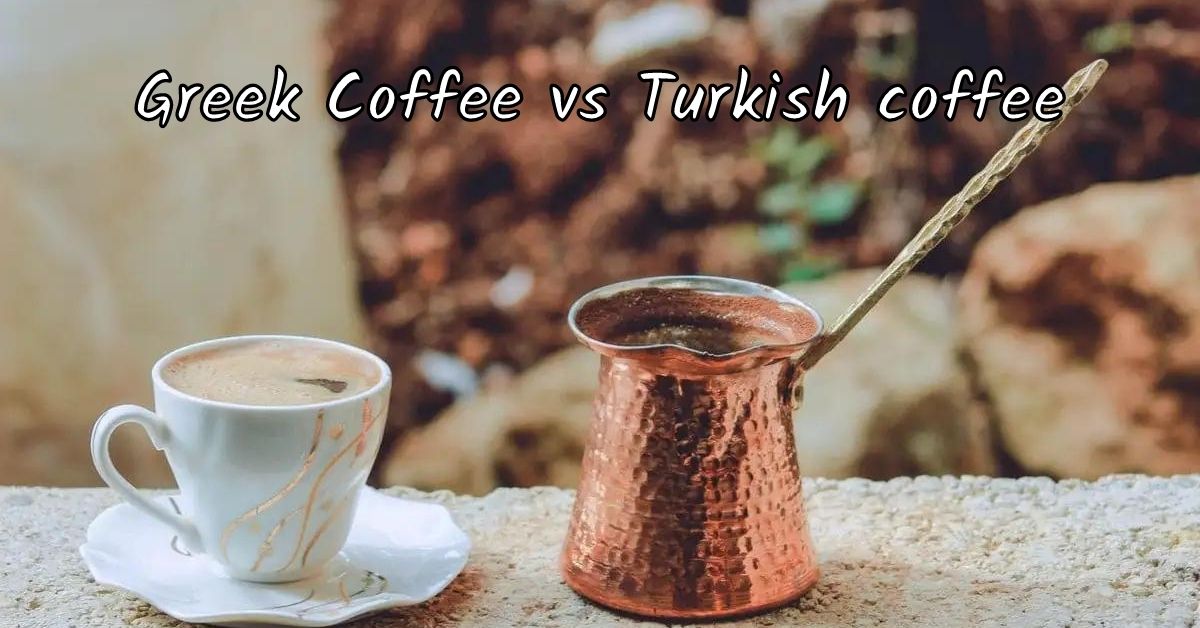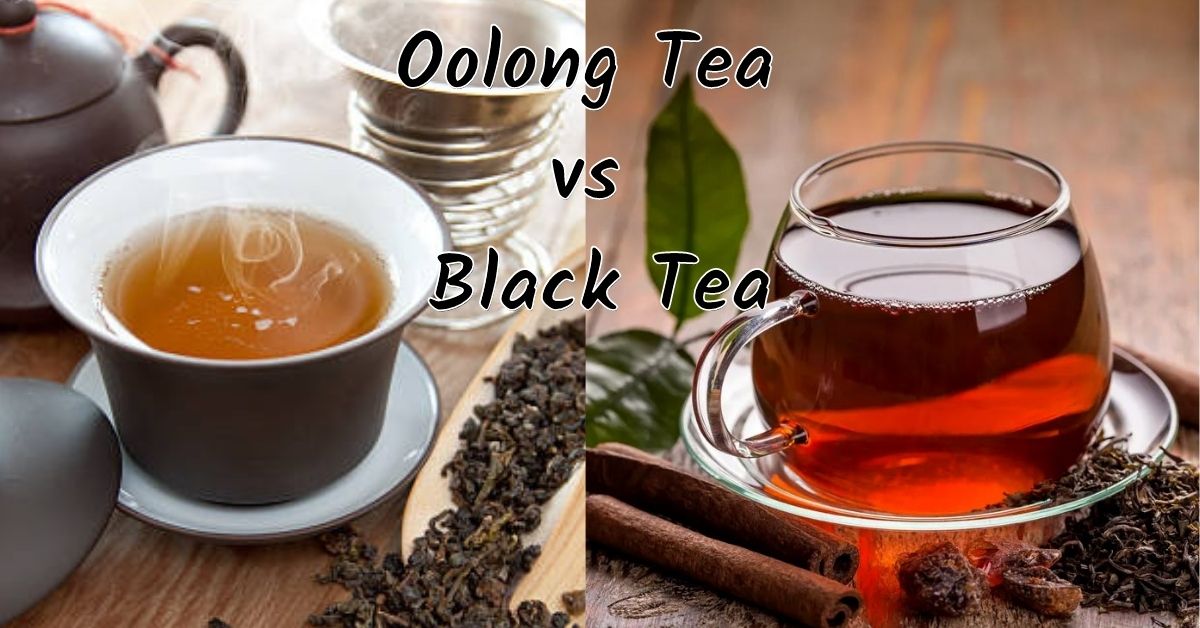There are two main types of coffee that are popular in the Mediterranean: Greek coffee and Turkish coffee. Both of these coffees are made using very fine coffee grounds, and they are usually served with a bit of sugar. In this greek coffee vs turkish coffee comparison article, we will go through the main difference between Greek and Turkish coffee. We will also discuss about their brewing process and other similarities.
Top 3 Greek Coffee
| Best Overall | Best Value | Most Affordable |
What is Greek Coffee?
Greek coffee is a type of coffee made with very finely ground coffee beans and boiled in a small pot called a briki. The coffee is served in a cup called a finikia and is usually accompanied by a glass of water. Greek coffee is traditionally made with a coffee machine called a kafetzi, but it can also be made on the stovetop. Greek coffee is usually made with a medium or dark roast coffee bean.
Greek coffee is a strong coffee, and is usually made with a coffee to water ratio of 1:16. This results in a thick, concentrated coffee that is very strong and flavorful. Greek style coffee is traditionally made with a brass briki, which is a small pot with a long handle. The greek coffee grounds are placed in the pot, and then hot water is added. The pot is then placed on a stovetop and brought to a boil. Once the coffee is boiling, it is removed from the heat and allowed to settle for a few minutes. The coffee is then poured into small cups, called Fijians, and served with a lid.
Traditional Greek coffee is usually drunk in black, but it can also be served with sugar or milk. Greek coffee is traditionally drunk after meals and is often served with dessert in greek coffee culture.
Coffee is one of the most popular drinks in the world and has been consumed for centuries. Traditional Greek coffee is a type of coffee that is prepared in a special way and is very popular in Greece.
If you want to know about great quality greek coffees then read this article: Best Greek Coffee and Coffee Brands
Top 3 Turkish Coffee
| Best Overall | Best Value | Most Affordable |
What is Turkish Coffee?

Turkish coffee has a long history, dating back to the 16th century. It is believed to have originated in the Ottoman Empire and was introduced to Europe in the early 17th century. Turkish coffee quickly became popular in Europe and was introduced to the Americas in the late 17th century.
Today, Turkish coffee is enjoyed all over the world and is particularly popular in Turkey, Greece, the Balkans, the Middle East, and North Africa.
Turkish coffee is a coffee that is prepared using very finely ground coffee beans. The coffee is then brewed in a pot called a cezve. Turkish coffee is usually served with a glass of water and often with some Turkish delight. It is traditionally served in a small cup with the grounds still in it after drinking coffee.
Turkish coffee is usually drunk slowly and savored, as the grounds can be quite bitter. It is a very strong coffee and is often served after a meal as a digestive.
Greek Coffee vs Turkish Coffee: What are the difference between Greek and Turkish coffee?
The debate between Greek coffee and Turkish coffee is one that has raged on for years, with no clear winner in sight. Both coffees have their own distinct methods of preparation, and both boast their own unique flavor profiles. So, which one is the better coffee, and what is the main difference between turkish and greek coffee? Let’s take a closer look at both Greek and Turkish coffee to see which one comes out on top.
Brewing Method
Greek coffee is made by boiling water with coffee and sugar, before spooning the mixture into small cups. The coffee is then allowed to settle, before being drunk. Turkish coffee, on the other hand, is made by boiling water and coffee together, before adding the mixture to a cup containing sugar. The coffee is then allowed to cool slightly, before being drunk.
Greek coffee is made using a briki, which is a small pot with a long handle already mentioned in this greek coffee vs Turkish coffee. The coffee grounds and water are placed in the pot, and the pot is then placed on the stove to boil. Once the coffee has boiled, the pot is removed from the heat and allowed to settle for a few minutes before being served.
Turkish coffee is also made using a small pot, but it’s called a cezve. The coffee grounds and water are placed in the pot and brought to a boil three times. After the third boil, the pot is removed from the heat and allowed to settle for a few minutes before being served.
Flavor
Which one tastes better Greek or Turkish coffee?
When it comes to flavor, both Greek and Turkish coffee have their own unique taste. Greek coffee is typically smoother and less bitter than Turkish coffee pot, which can often be quite strong.
Greek coffee is less bitter than Turkish coffee because the grounds are only boiled once. Turkish coffee is very strong and very bitter because the grounds are boiled three times. However, some people prefer the bolder flavor of Turkish coffee. Ultimately, it comes down to personal preference.
Caffeine Content
When it comes to caffeine content, both Greek and Turkish coffee pack a punch. However, Turkish coffee contains a higher concentration of caffeine when there is a specific greek coffee vs turkish coffee comparison, due to the fact that the grounds are not filtered out before drinking. This means that Turkish coffee may give you a bit of a jolt, whereas Greek coffee will provide a more gentle caffeine buzz.
Serving Process
Another difference is in the way that the coffee is served.
Turkish coffee is served with the grounds still in the coffee cup, while Greek coffee is strained before serving. Both are traditionally served in small cups. Turkish coffee is traditionally served with a piece of Turkish delight or a piece of fruit.
How to brew Greek Coffee
Brewing Greek coffee is an art form that has been passed down through generations. The coffee is made using a small coffee pot, called a briki, and is traditionally served in a small cup.
Here is a step-by-step guide on how to brew Greek coffee:
- Start by boiling water in the briki. Once the water has reached a boil, remove the pot from the heat and let it cool for a minute.
- Add one heaping teaspoon of greek ground coffee per cup (plus one extra for the pot) to the briki.
- Add sugar to the pot, according to your taste.
- Stir the coffee and sugar together until the sugar has dissolved.
- Place the pot back on the stove and bring it to a boil. Once the coffee has reached a boil, remove it from the heat and let it cool for a minute.
- Pour the coffee into small cups, filling them about halfway.
- Enjoy your Greek coffee.
Greek coffee is usually served in small cups, and it is important to drink it slowly in order to enjoy the full flavor. Greek coffee is traditionally drunk in black, but some people may add milk or cream.
Greek coffee is a great way to start the day or to enjoy a break in the afternoon. It is also a popular drink to have after a meal as mentioned in this greek vs Turkish coffee comparison. Greek coffee is a great way to socialize and enjoy the company of others.
How to Brew Turkish Coffee
Brewing Turkish coffee is an art and a tradition that has been passed down for centuries. The coffee is brewed in a special pot called a cezve, and the coffee grounds are left in the cup.
Turkish coffee is made by bringing water to a boil and then adding coffee and sugar to the pot. The coffee and water are stirred together and then brought to a boil again. Once the coffee is boiling, it is spooned into cups and served.
When brewing Turkish coffee, it is important to use a coffee that is finely ground. The coffee grounds should be the consistency of powder as mentioned before in this Turkish coffee vs greek coffee comparison. If the coffee is too coarsely ground, it will not dissolve in the water and will float to the top of the coffee cup.
Assuming you would like a detailed recipe for Turkish coffee brewing:
- Boil water in a small pot. Add sugar and coffee grounds, and stir to combine.
- Reduce heat and simmer for 3-5 minutes, stirring occasionally.
- Pour coffee into small cups, and enjoy!
Greek Coffee vs Turkish Coffee: What are the difference between Greek and Turkish coffee?
The debate between Greek coffee and Turkish coffee is one that has raged on for years, with no clear winner in sight. Both coffees have their own distinct methods of preparation, and both boast their own unique flavor profiles. So, which one is the better coffee, and what is the main difference between turkish and greek coffee? Let’s take a closer look at both Greek and Turkish coffee to see which one comes out on top.
Brewing Method
Greek coffee is made by boiling water with coffee and sugar, before spooning the mixture into small cups. The coffee is then allowed to settle, before being drunk. Turkish coffee, on the other hand, is made by boiling water and coffee together, before adding the mixture to a cup containing sugar. The coffee is then allowed to cool slightly, before being drunk.
Greek coffee is made using a briki, which is a small pot with a long handle already mentioned in this greek coffee vs Turkish coffee. The coffee grounds and water are placed in the pot, and the pot is then placed on the stove to boil. Once the coffee has boiled, the pot is removed from the heat and allowed to settle for a few minutes before being served.
Turkish coffee is also made using a small pot, but it’s called a cezve. The coffee grounds and water are placed in the pot and brought to a boil three times. After the third boil, the pot is removed from the heat and allowed to settle for a few minutes before being served.
Flavor
Which one tastes better Greek or Turkish coffee?
When it comes to flavor, both Greek and Turkish coffee have their own unique taste. Greek coffee is typically smoother and less bitter than Turkish coffee pot, which can often be quite strong.
Greek coffee is less bitter than Turkish coffee because the grounds are only boiled once. Turkish coffee is very strong and very bitter because the grounds are boiled three times. However, some people prefer the bolder flavor of Turkish coffee. Ultimately, it comes down to personal preference.
Caffeine Content
When it comes to caffeine content, both Greek and Turkish coffee pack a punch. However, Turkish coffee contains a higher concentration of caffeine when there is a specific greek coffee vs turkish coffee comparison, due to the fact that the grounds are not filtered out before drinking. This means that Turkish coffee may give you a bit of a jolt, whereas Greek coffee will provide a more gentle caffeine buzz.
Serving Process
Another difference is in the way that the coffee is served.
Turkish coffee is served with the grounds still in the coffee cup, while Greek coffee is strained before serving. Both are traditionally served in small cups. Turkish coffee is traditionally served with a piece of Turkish delight or a piece of fruit.
Conclusion
So, which coffee is the better choice greek coffee or turkish coffee?
If you have gone through this whole greek coffee vs turkish coffee article, then it must be clear to you that it depends on what you’re looking for. If you want a smooth, flavorful coffee, then Greek coffee is the way to go. If you’re after a strong coffee with a high caffeine content, then Turkish coffee is the better option. Ultimately, it’s up to you to decide which coffee is best for you.







